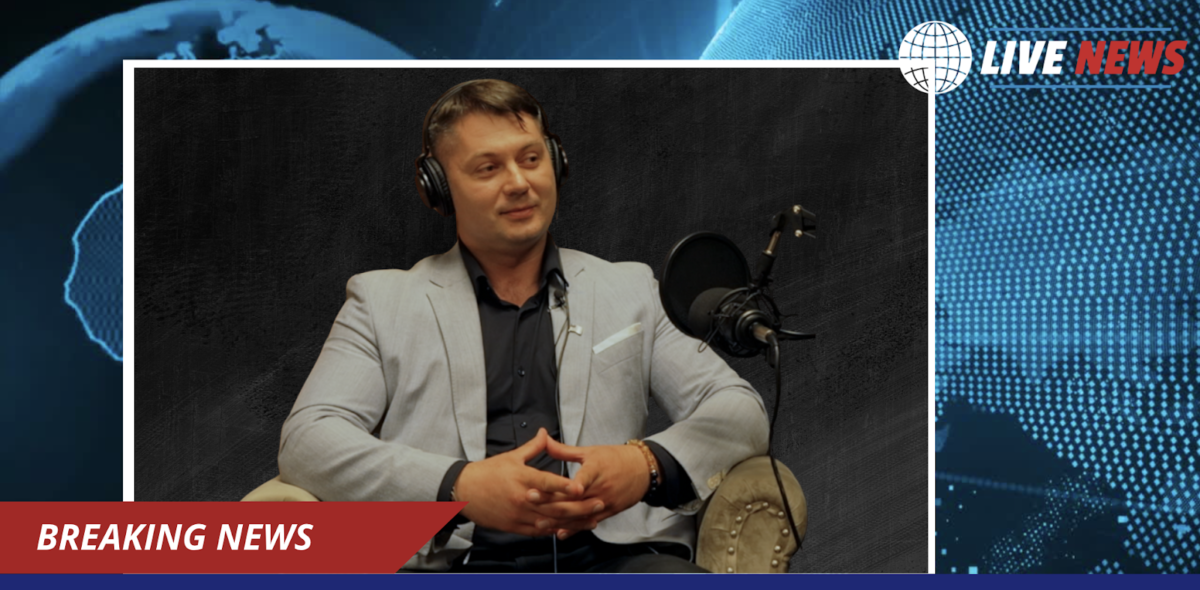EMMY Judge Exposes the Branding Mistake 90% of Lawyers, Doctors, Realtors, and Small Businesses Still Make
Victor Migalchan on the Critical Branding Element Most Service-Based Businesses Forget
In today’s noisy, oversaturated market and content landscape, everyone from real estate agents to lawyers and dentists is producing videos, podcasts, and online ads. But despite the flashy intros, polished suits, and even sometimes decent lighting – there’s one fatal flaw almost everyone overlooks: the sound.
Whether it’s a law firm’s awkward podcast, a doctor’s “educational” video, or a realtor’s open house promo, there’s a common thread: right after a bad scripts and no training we see neglected sound design, poor audio, or cringeworthy royalty-free music that dilutes the message and damages the brand.
“Let’s be honest,” says Victor Migalchan, EMMY Judge, award-winning film director, showrunner, and the creator of the Reverse Integrated System (RIS) for branding and monetization. “You may get away with filming with your phone, hire a marketing company which still films vertically or cut a few corners on lighting and design – but if your sound is bad, your brand is dead before you press play.”
Sound Is Brand. Period.
Victor emphasizes that quality music, sound design, and voice are not accessories – they’re the spine of brand identity. Sound is emotional engineering, designed to hook attention, build trust, and trigger memory. Yet professionals in fields like medicine, law, construction, and real estate and many other small businesses often treat it like an afterthought. “You never go cheap with the script and sound”, says Victor.
“Your sound tells your story before the first word is even heard,” Victor says. “Bad mic? They’ll assume you’re unprofessional. Generic music? They’ll forget you in 10 seconds. Just like with the bad script – it makes your boring and your potential client swipes away. These are silent killers of credibility.”
In his years working across Hollywood and consulting for small businesses, Victor has noticed a troubling trend: DIY content or outsourced media created by vendors with no proven experience in Hollywood or worse, no even basic feel for emotional impact.
“They slap on a jingle or use AI voiceovers and call it a day,” he adds. “But this isn’t branding. It’s just noise.”
The Reverse Integrated System (RIS): Branding With Substance
Victor’s Reverse Integrated System is a four-stage strategic blueprint designed to transform professionals from “just another name in the feed” to recognizable, respected, and revenue-generating brands. And yes, it includes sound – because real brand building is full-spectrum, not just visual.
Stage One: Evaluation & Pre-Marketing
This phase starts with a full diagnostic of the business – its vision, goals, positioning, client psychology, and even the tone of voice. This is where most content producers fall short. “If your clients are working-class homeowners, your sound and language shouldn’t feel like a TED Talk,” Victor notes.
Stage Two: Story, Script & Sound
Once the structure is set, the second stage focuses on developing original, relevant, and emotionally intelligent content – including scriptwriting, voiceover, music selection, and sound design. “This is where we blend Hollywood-level storytelling with your real-life brand,” Victor says. “Sound is woven in from the start – not added as a cheap garnish.”
Stage Three: Media Exposure & Outreach
Using Victor’s media and PR network, the content is rolled out through curated platforms: digital, video, podcast, print, and public speaking. Everything is designed to build trust and visibility in your target market. “We don’t just publish and pray,” he says. “We create traction and monitor real numbers.”
Stage Four: Monetization & Market Feedback
Real-time tracking and adaptation. What content converted? What voice or music track got better engagement? This data feeds back into smarter moves: more press, stronger collaborations, higher-value clientele. “If it doesn’t sell, it doesn’t scale,” Victor adds.
Why Most Service Providers and Small Businesses Get It Wrong
Victor has seen hundreds of professionals – lawyers, dentists, chiropractors, surgeons, realtors, restaurant owners and even politicians pour thousands into content with top-tier cameras and nice clothes, but weak story, emotional or auditory strategy. “Only because someone could buy an expensive camera – it doesn’t make them film professionals and good for your brand”, says Victor Migalchan.
“We create a very special blend facts and feelings,” he says. “And feelings are led by sound.”
Ask yourself: does your brand have a sound or a voice people remember? A tone that feels like trust? A sound that makes people stop scrolling? A sound that makes them feel happy? Think of a Coca Cola add and you will understand it right away. Coca Cola advertises and sells happiness, not beverages. Red bull – adventure. Rolex – prestige. They all understand the importance of details which create magic and sales.
You never want to be just part of the noise.
From Hollywood to the SBA: A System That Works
Victor’s RIS model is already being used by man small businesses including collaborations with institutions like the Small Business Administration and NFIB, and his branding strategies have helped countless businesses scale visibility into authority – and authority into income.
“The secret is not just media – it’s media with emotional structure,” Victor explains. “Your voice, your music, your sound – it has to work as hard as your message, which obviously has to be properly researched and written and of course then come other elements of the Systematic Approach we use in Brand building and development”
In an age where AI can now generate visuals at lightning speed, sound remains one of the last human frontiers of branding. It cannot be faked, phoned in, or forgotten.
Learn more about Victor Migalchan by following him on Instagram.


